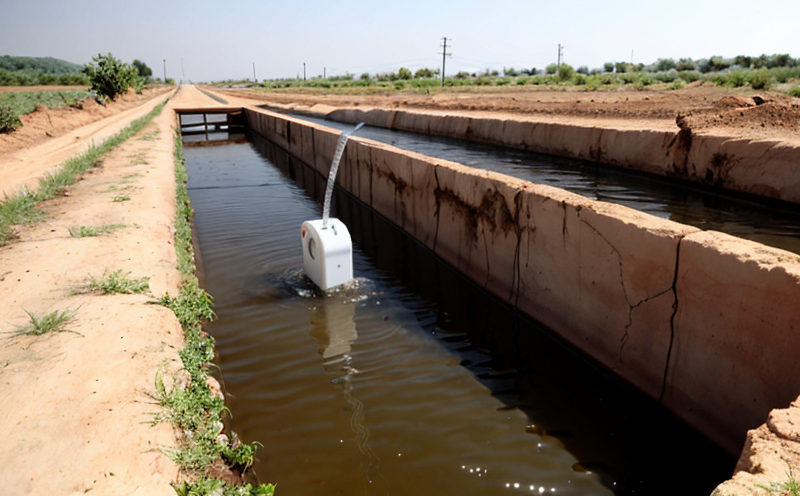ASTM D5673 ICP MS Elements in Water Testing
The ASTM D5673 standard outlines a method for determining trace elements in water using Inductively Coupled Plasma Mass Spectrometry (ICP-MS). This testing is crucial for ensuring the quality of mine waters and groundwater, especially in mining sectors where environmental compliance and product quality are paramount. In this section, we will explore the details of ASTM D5673 ICP-MS elements in water testing.
The ASTM D5673 method uses a combination of sample preparation techniques followed by ICP-MS analysis to measure trace elements in water samples from mining operations. Trace elements include metals such as copper, iron, zinc, and others that can influence the quality of mine waters and their suitability for various processes within the mining sector.
Sample preparation is a critical step in ASTM D5673 testing. The process involves collecting water samples and ensuring they are representative of the source. Samples must be free from contamination, which requires proper handling and storage techniques to prevent any alteration of the sample composition. Once collected, the samples undergo digestion using strong acids like nitric acid, followed by dilution with deionized water.
The ICP-MS instrument used in this testing is highly sensitive and capable of detecting trace elements at parts per billion (ppb) levels. The instrument consists of an atomizer that converts the sample into a plasma, which then passes through a mass analyzer where ions are separated based on their mass-to-charge ratio. This separation allows for precise measurement of specific elemental concentrations in the water.
The ASTM D5673 method specifies several quality control measures to ensure accuracy and precision in the test results. These include blanks, spikes, and replicate samples to validate the analytical procedure. Blanks help identify any potential contamination from reagents or equipment, while spikes provide a check on the calibration of the instrument.
The testing process involves several steps:
- Collection of water samples
- Digestion with nitric acid
- Dilution to appropriate concentrations
- Spectra acquisition using ICP-MS
- Data analysis and reporting
The results from ASTM D5673 testing provide critical information for mine operators, ensuring that water quality meets regulatory standards and operational requirements. Proper water management is essential for the sustainability of mining operations, reducing environmental impact and maintaining compliance with local and international regulations.
| Element | Units | Detection Limit (ppb) |
|---|---|---|
| Copper | µg/L | 0.1 |
| Zinc | µg/L | 0.2 |
| Ferrous Iron | µg/L | 0.5 |
| Manganese | µg/L | 1.0 |
The ASTM D5673 method ensures that trace elements in mine waters are accurately measured and reported, providing essential data for decision-making processes within the mining sector.
Applied Standards
The application of ASTM D5673 ICP-MS in water testing is governed by several international standards. The primary standard used is ASTM D5673, which specifies the procedure for determining trace elements in water using Inductively Coupled Plasma Mass Spectrometry (ICP-MS). This method is widely accepted and used across various sectors, including mining.
Other relevant standards include:
- ISO 17025: Requirements for the Competence of Testing and Calibration Laboratories
- EN ISO/IEC 17034: General requirements for proficiency testing providers
- IEC 61967-2: Photometric characteristics of light-emitting diodes (LEDs) - Part 2: Test conditions
The ASTM D5673 method ensures that the results are accurate, reliable, and comparable internationally. The use of these standards guarantees that testing laboratories adhere to best practices and maintain high-quality standards.
Industry Applications
In the mining sector, the quality of mine water is critical for various processes, including ore processing, tailings management, and environmental protection. ASTM D5673 ICP-MS elements in water testing plays a vital role in ensuring that these waters meet regulatory standards and operational requirements.
By using this method, mining companies can:
- Evaluate the quality of mine waters
- Detect trace elements that may affect downstream processes
- Maintain compliance with environmental regulations
- Ensure water is safe for reuse in mining operations
The results from ASTM D5673 testing are used to inform decisions on water treatment, reclamation efforts, and operational adjustments. This helps ensure that mining operations are sustainable and environmentally responsible.
International Acceptance and Recognition
The ASTM D5673 ICP-MS elements in water testing method is widely recognized and accepted internationally. Its use ensures consistency in results, which is crucial for global mining operations that operate across multiple countries.
- Australia: Adhered to for compliance with AS 1142
- Canada: Used for regulatory purposes under the Canadian Environmental Protection Act
- United States: Required by EPA regulations and state-specific guidelines
- European Union: Recognized in EU directives on water quality standards
The ASTM D5673 method is a cornerstone of environmental compliance and quality assurance for mining operations worldwide.





